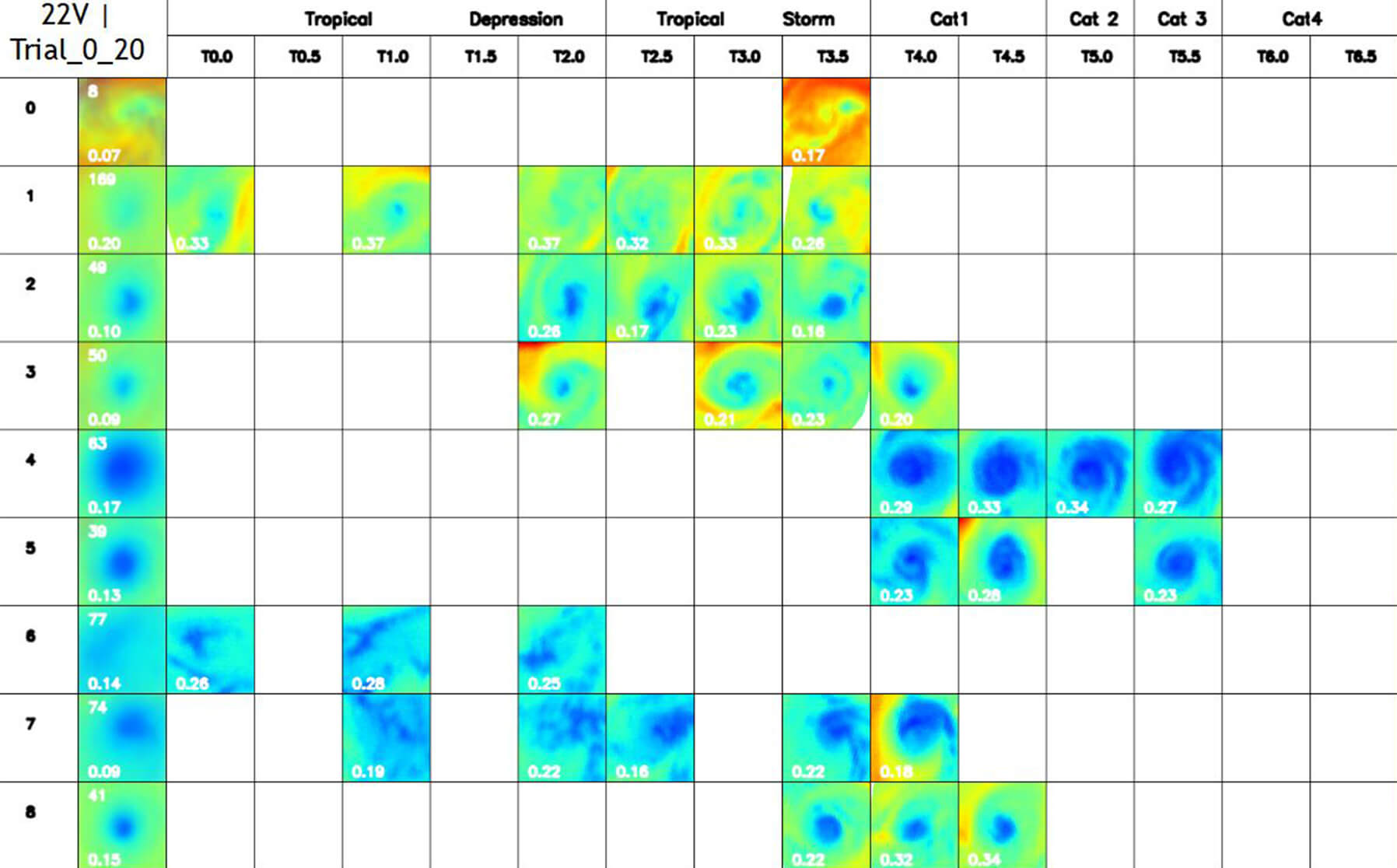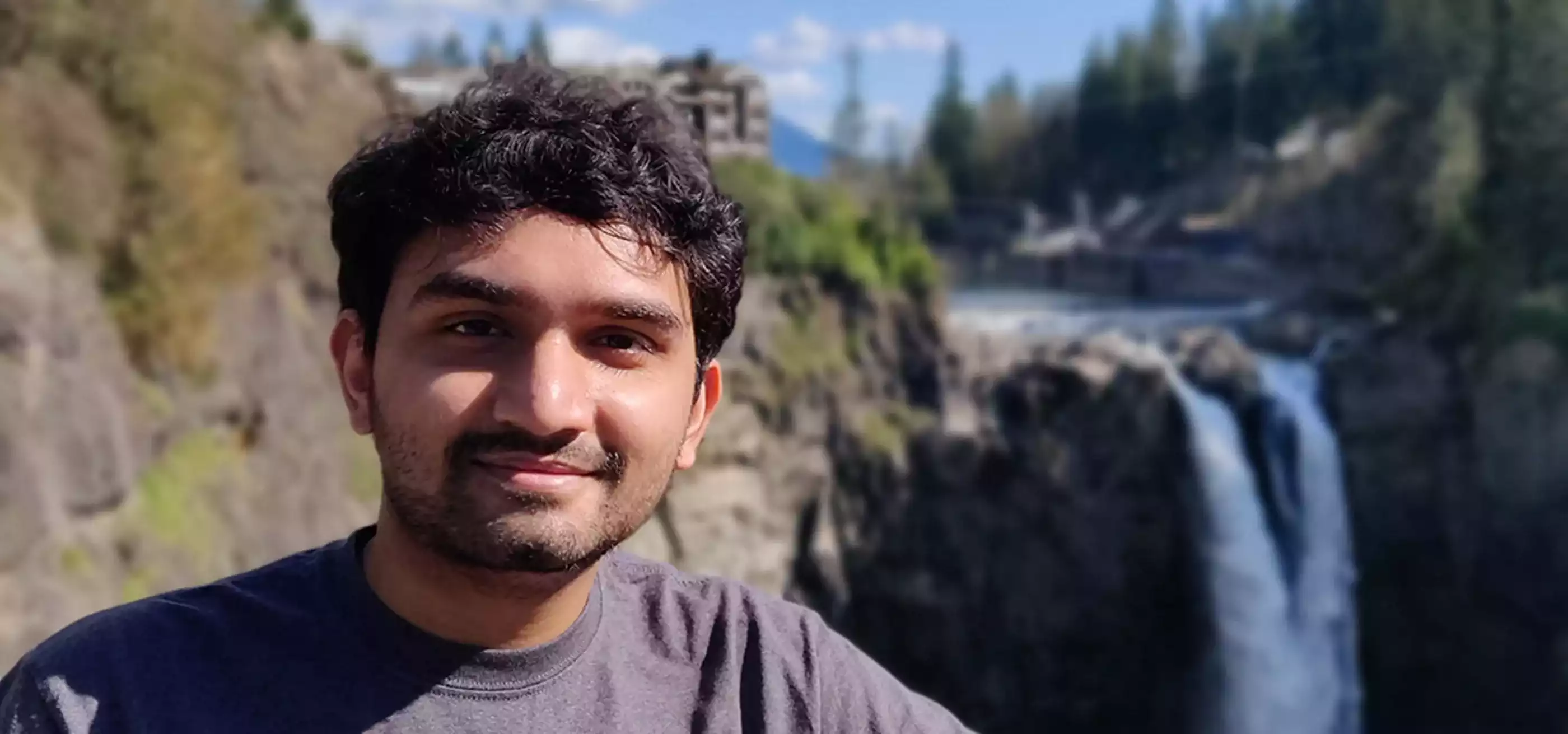MS in Computer Science alumnus Dhrumil Shukla’s DigiPen journey took a few unexpected turns on his way to graduation. Like many students, he arrived with dreams of the game industry. “Once I was here, I started working on different games and learning more about graphics programming, AI programming, and it all just mesmerized me,” Shukla says. But during his second semester, Shukla’s studies got swept up in another direction — one that would suddenly land him at a prestigious atmospheric science conference, presenting his thesis on a method for predicting the intensity of tropical cyclones, known as hurricanes in North America.
The perfect storm that led him there started in a machine learning course with Dr. Barnabas Bede (Associate Professor and Dept. Chair of Mathematics). “It was all the math!” Shukla says of the hook that got him interested in machine learning. “I loved getting to apply all that math into code and use it to gain insight from data. It’s difficult but it really pushed me in my learning. That was the point I realized machine learning was something I’d love to pursue alongside gaming.”
That summer, eager to continue exploring the topic, Shukla started looking for machine learning research opportunities — something he ended up finding in the Atmospheric Electricity and Remote Sensing research group at DigiPen led by Dr. Natalia Solorzano and Dr. Jeremy Thomas.
Profs. Solorzano and Thomas, experts in lightning and remote sensing of severe storms using satellite data, were recruiting students interested in machine learning for atmospheric science research on tropical cyclones. Prior DigiPen students had made their mark on the professors’ ongoing research, including a real-time tropical cyclone monitoring tool that was developed with BSCS graduate Connor Bracy.
Even though atmospheric science as a subject wasn’t yet on his radar, Shukla was eager to dive in. “I didn’t fully understand it at first,” Shukla says. “But something professor Bede taught us is that to become a machine learning engineer, you’ll need to be able to go through datasets you currently don’t understand well. In this field, you’ll always encounter data that’s very difficult for you to understand at first.”
As a computer scientist, it was fun to teach atmospheric scientists about my techniques and then learn more from them about atmospheric science as well.
Shukla quickly found himself learning about different types of satellites, storm imaging frequency spectrums, and tropical cyclone intensity estimation methods — namely the Dvorak technique. Used to estimate the wind intensity of tropical cyclones, the technique was developed between the late 1960s and mid-1980s, relying on visible and infrared storm imagery from geostationary satellites that sense mostly cloud top temperatures.
One focus of Profs. Solorzano and Thomas’ research involves using microwave frequency imagery from low-Earth orbiting (LEO) satellites that can sense water and ice particles, known as hydrometeors, deeper into storm clouds than visible and infrared imagery can provide. Prof. Solorzano, Shukla’s primary thesis advisor, devised a method of identifying recurring cloud patterns (known as “Dvorak patterns”) in tropical cyclones by applying clustering algorithms to microwave imagery. Developing, implementing, and testing this new method was the aim of Shukla’s thesis research.
Shukla investigated whether or not it was possible to automate the Dvorak process to predict cyclone intensity and to detect Dvorak patterns using machine learning. To do so, Shukla began converting 14 years’ worth of tropical cyclone satellite data — dating from 2005 to 2019 — into microwave images, and running them through a machine learning cluster analysis. Shukla used a variety of clustering methods and was able to select the best approach for the given dataset.

The results were a success. Shukla’s machine learning algorithm clustered microwave satellite imagery of tropical cyclones, detecting Dvorak patterns and successfully placing them in the correct wind intensity category (known as the T-number and Saffir-Simpson scales).
Shukla’s discoveries were presented at the prestigious American Meteorological Society’s (AMS) 101st Annual Meeting in January, and the 34th Conference on Hurricanes and Tropical Meteorology in May. “It was a unique experience, because a bridge was developed between atmospheric science and machine learning,” Shukla says of the conference. “As a computer scientist, it was fun to teach atmospheric scientists about my techniques and then learn more from them about atmospheric science as well.”
When I go into my job and there’s a new concept I don’t understand, I can easily figure it out because of the way I learned to approach things here at DigiPen.
Although Shukla graduated in 2020 with a successful thesis to his credit, he hasn’t been resting on his laurels. “Currently, I’m still working on improving the code for the project. I just do it myself whenever I have free time,” he laughs. “We want to make an add-on to Profs. Solorzano and Thomas’ current real-time application where atmospheric scientists can just provide storm imagery, and it will produce the outcomes they need. That’s the final goal.”
While his DigiPen career went from video games to atmospheric science, Shukla did indeed end up landing a job in the industry he dreamed of. Today, he’s working as a software engineer at Visual Concepts, where he’s been busy learning the complex game engine behind the NBA 2K series. “At DigiPen, in the two years I was there, I was able to learn so much,” Shukla says. “The concepts I learned themselves were important, but it was really the way I learned to approach learning concepts that made the difference. When I go into my job and there’s a new concept I don’t understand, I can easily figure it out because of the way I learned to approach things here at DigiPen.”
Professor Bede is currently seeking more interested undergraduate and MS students to join this research in remote sensing and machine learning. Please contact bbede@digipen.edu for more info.
